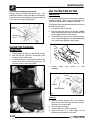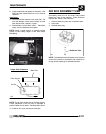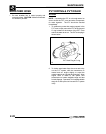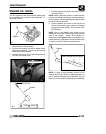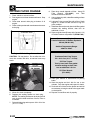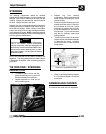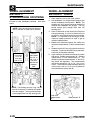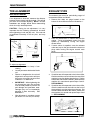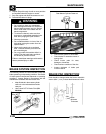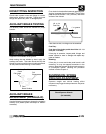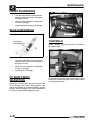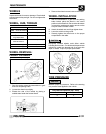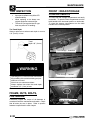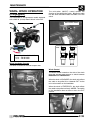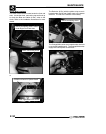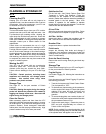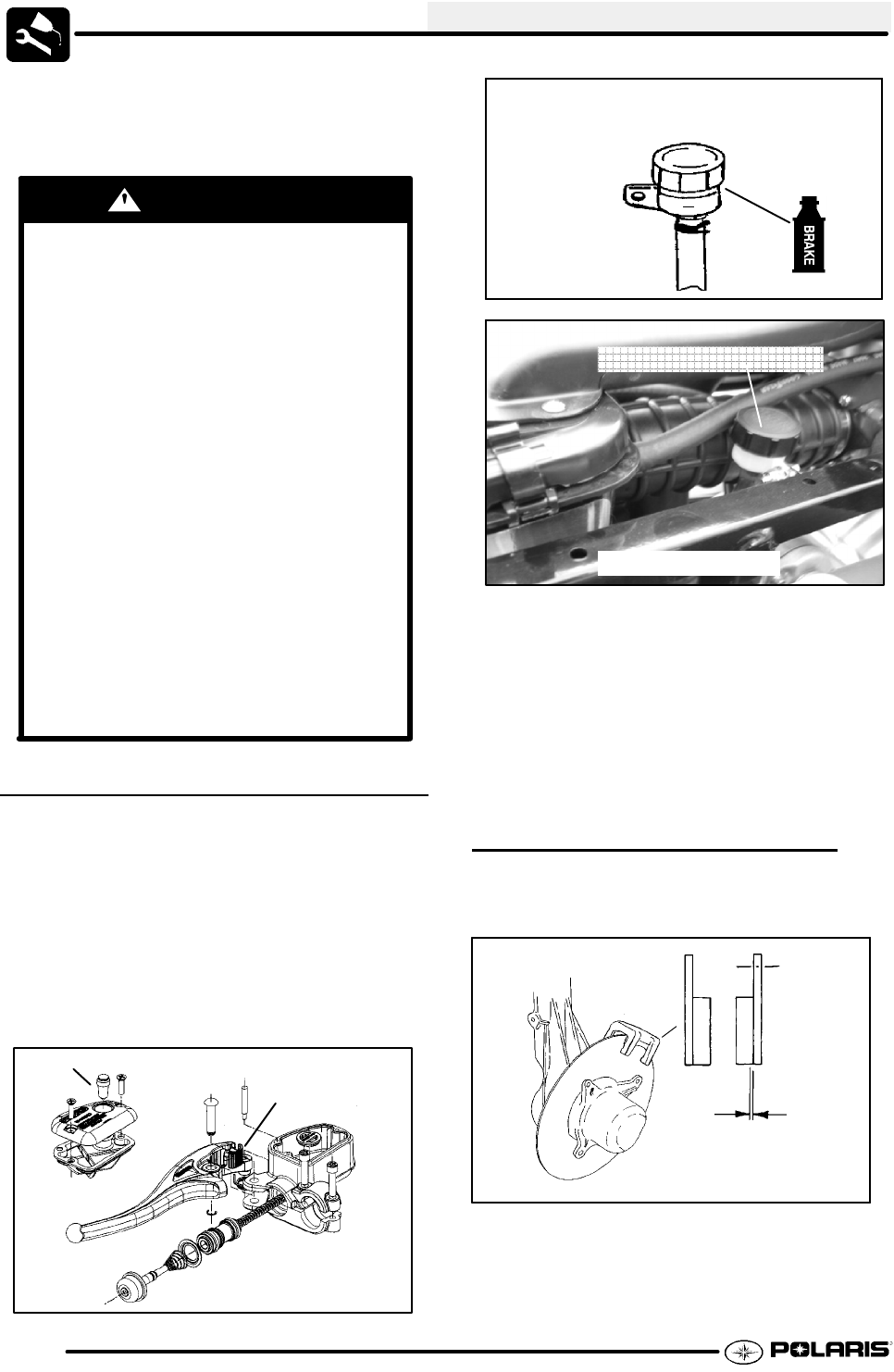
MAINTENANCE
2.28
6. Repeat Steps 2 through 5 until no more particles
are expelled when the engine is revved.
7. Stop the engine and allow the arrestor to cool.
8. Reinstall the clean out plugs.
WARNING
G Do not perform clean out immediately
after the engine has been run, as the ex-
haust system becomes very hot. Serious
burns could result from contact with ex-
haust components.
G To reduce fire hazard, make sure that
there are no combustible materials in the
area when purging the spark arrestor.
G Wear eye protection.
G Do not stand behind or in front of the ve-
hicle while purging the carbon from the
spark arrestor.
G Never run the engine in an enclosed
area. Exhaust contains poisonous car-
bon monoxide gas.
G Do not go under the machine while it is
inclined. Set the hand brake and block
the wheels to prevent roll back.
Failure to heed these warnings could result in
serious personal injury or death.
BRAKE SYSTEM INSPECTION
The following checks are recommended to keep the
brake system in goodoperating condition. Service life
of brake system components depends on operating
conditions. Inspect brakes in accordance with the
maintenance schedule and before each ride.
G Keep fluid level in the master cylinder
reservoir to the indicated level inside
reservoir.
G Use Polaris DOT 3 Brake Fluid (PN
2870990).
Parking Brake
Lock
Sight
Glass
Min.
Max
Rear Master Cylinder Reservoir
Auxiliary Brake Reservoir
Located Under Seat
G Check brake system for fluid leaks.
G Check brake for excessive travel or
spongy feel.
G Check friction pads for wear,
damage or looseness.
G Check surface condition of the disc.
G Inspect thickness of brake pad
friction material.
BRAKE PAD INSPECTION
Pads should be changed when the friction material is
worn to 3/64″(.1 cm), or about the thickness of a dime.
3/64″
(.1cm)
Minimum
Thickness



